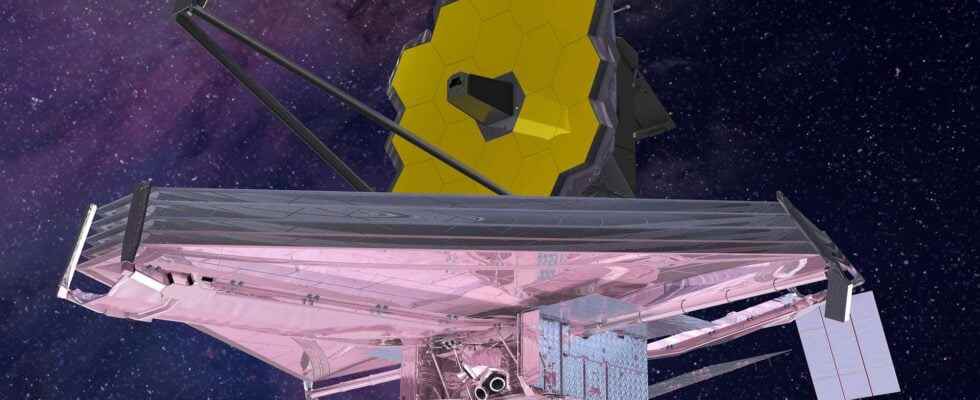To communicate with the largest space telescope based 1.5 million kilometers from Earth, there is no magic: antennas! the Deep Space Network NASA today tested the reception of the telescope’s high-gain antenna in preparation for its final destination.
You will also be interested
[EN VIDÉO] Understand the James Webb Space Telescope mission in one minute The James Webb Space Telescope, a new flagship in space observation, will be launched on December 18 from Kourou, Guyana. After a journey of 29 days, it will reach the Lagrange point L2, in the opposite direction to the Sun. With its mirror larger than that of Hubble, of which it is considered the successor, the JWST will be able to observe galaxies, planets, nebulae and stars to learn more about the history of the Universe.
the James Webb Space Telescope, launched with great fanfare on December 25, traveled 1.5 million kilometers through interplanetary space to reach the Lagrange point L2. This destination was favored because of the alignment on the Earth-Sun axis, which is perfect for cooling the telescope to a mere 40 degrees Celsius above the absolute zero. But the Lagrange points especially allow by definition to remain at a fixed distance from the Earth throughout theorbit around Sun, which ensures continuous communications throughout the year.
As on Earth, telecommunications are provided by antennas operating at certain frequencies. the James Webb has four of them: one at low frequency called “medium gain”, which consumes little energy which guarantees permanent contact with the Earth and transmits the on-board parameters and the telemetry of the probe, another at high frequency called “high gain” which will allow the scientific data collected to be transferred, then two other antennas which will be used as backup because they are omnidirectional.
Since the launch, it is the medium-gain antenna which has ensured communication with the satellite, and the monitoring of its deployment. It operates in the S band, at 2.27 GHz, and allows data transfer with a debit of 40 kb/s, worthy of the beginning ofInternet, certainly unacceptable to watch your favorite series in 4K, but more than enough for vital data from space probes.
A good flow!
The telescope has just reached its final destination and the teams were able to test the transmission of the high-gain main antenna for the first time. The antennae of Deep Space Network of Canberra in Australia then successfully received the signal at 25.90 GHz (K band), which will later make it possible to receive images from the depths of the observable universe or the first data on the composition of theatmosphere of exoplanets. As the frequency is higher, the speed is too and here reaches 28 Mb/s, comparable to a DSL modern!
The speed reaches 28 Mb/s, comparable to a modern ADSL!
Unlike the backup antennas, the two main antennas are not omnidirectional, they are parabolas of 20 and 60 centimeters in diameter for the medium gain and high gain antennas, respectively.
The dish, like those found on Earth, serves to focus theelectromagnetic wave into a relatively straight beam, and to direct it towards the Earth. If the signal beam were perfectly straight, its diameter would still be 60 cm when it arrived on Earth. In reality, after 1.5 million kilometers traveled, the beam is the size of the Earth itself!
The signal loses a lot of strength with distance. Canberra’s DSS-34 antenna, with its 34-meter dish, was picking up, at the time of writing, the signal from the high-gain antenna of the JWST with a power of 0.0000000000007 watt !
That’s over a millionth of a billionth the power of an antenna. 5G that we use every day, which seems quite little, but the receiving antenna like the rest of the Deep Space Network was designed to receive much weaker signals from much more distant probes, such as the Voyager probes several billion kilometers from us. These antennas are so sensitive that the signal from the JWST is actually too intense and overloads the receiver! The teams must then voluntarily reduce the intensity of the signal.
Interested in what you just read?
